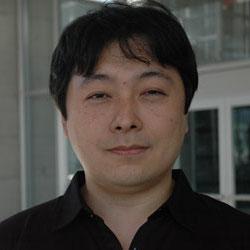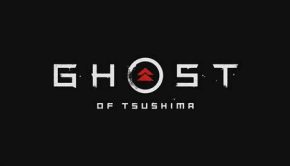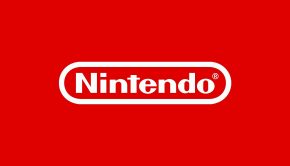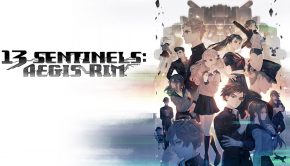Manabu Namiki Profile
 |
Also Known As: 並木学 (なみきまなぶ) / Santarou / Santaruru / Taro |
| Date of Birth: August 13, 1971 (Funabashi) |
|
| Residence: Tokyo |
|
| Game Works: Zed Blade, DoDonPachi, Mushihimesama, Konami ReBirth |
|
| Official Site: English Site |
History
| Organisation | Type | Tenure | Role |
| Allumer | Game Developer | 1990 – 1991 | Graphics Design, Sound Programming |
| NMK | Game Developer | 1992 – 1995 | Composer, Sound Designer |
| Raizing | Game Developer | 1995 – 2000 | Composer, Sound Designer |
| Basiscape | Music Production | 2003 – 2011 | Composer, Sound Designer |
| GE-ON-DAN | Artist Collective | 2009 – 2011 | Member |
| M2 | Game Developer | 2012 – | Planner, Director, Chief Sound Lead |
Biography
Manabu Namiki is an electronic game music composer known primarily for his work on shooting and fighting games. Born on September 13, 1971 in Funabashi, Namiki obsessively played arcade games such as Pac-Man, Donkey Kong, and Xevious. Namiki wasn’t initially interested in music and received no formal training in the field. Nevertheless, the catchy sounds of arcade games increasingly started to appeal to him and he even purchased Haruomi Haruno’s Video Game Music album upon its 1984 release. As he entered junior high school, he was influenced by the boom of 1980s Western music in Japan — going to see heavy metal bands such as White Snake and Metallica in concert. With music now his main passion, he started composing for the first time after purchasing an analogue synthesizer and an MSX-2 personal computer. Programming PSG data in BASIC, he attempted to imitate the riffs of his favourite bands, between writing tracks more akin to classic game music. In 1989, he even formed a amateur cover band with several friends and went on to perform music from OutRun, Darius, and others at his high school’s festival. While preparing to enter college, Namiki was invited to become a part-time graphics designer at the developer Allumer in 1990. Though he had no previous artistic experience, his supervisor shown him the ropes for the game Rezon. Upon starting college, Namiki switched his focus to sound programming on Blandia, but was unable to keep up with the pace of work and eventually lost his job.
Namiki realized that he wanted to continue game development, rather than studying, but felt he would be much more suited in the role of sound creation than graphics and programming. His demo tape won the attention of robust arcade developer NMK and he started work as a resident sound director in March 1992. In his initial roles, he wrote the comical score for the remake Bombjack Twin — paying utmost regard to the original throughout — between writing some location test tracks for Super Space Fortress Macross.The artist went on to compose the iconic scores for the arcade shooters Thunder Dragon 2 and Zed Blade (aka Project Ragnarok) in solo roles. While the former featured a bright fast-paced score typical to other classic shooters, he pushed musical and technological boundaries by offering a hardcore techno sound throughout Zed Blade. Like most game sound production during that era, both projects proved technologically demanding; he initially created the music and sound effects using MIDI instruments, then afterwards converted them into data for implementation on the game board using a combination of FM and ADPCM synthesis. The artist took smaller roles on Quiz Panicuru Fantasy, Super Space Fortress Macross II, and P-47 Aces under the supervision of Kazunori Hideya. He concluded his time at NMK by scoring Desert War, creating what he regards as his most mature and definitive work up to that point.
In 1995, Namiki decided to leave NMK to join Raizing. Having great respect for the staff who founded this company, Namiki wanted to work together with them to produce better, bolder games. His soundtrack for Battle Garegga — a highly regarded dieselpunk shooter — was very well-received and provided him with his popular breakthrough. Building on his approaches from Zed Blade, Namiki wanted to breathe the life of Detroit techno throughout the score. While he found FM synthesis had become limiting to work with, he carefully studied other techno-flavoured scores — Nobuyuki Shioda’s Recca, Shinji Hosoe’s F/A, and Hitoshi Sakimoto’s Terpsichore scores — to enhance the final product. Eight years later, the music was featured in original and arranged form in a DVD-CD box set. Marking his debut as a fighting game composer, Namiki served as the sound director for Bloody Roar; though his composition role was small, he handled the implementation of both the arcade and console versions, while working closely with other members of the composition team. This project marked his first composition role alongside Hitoshi Sakimoto and Masaharu Iwata, two composers he greatly admired. The artist went on to have significant composing roles on Armed Police Batrider, Bloody Roar 2, and Shinshuku Taisen: It’s a Noni!. Also increasingly reputed for his technical prowess, he created the sound effects for Terra Diver and Go-Jin Senki, worked on the console ports of Terra Diver and Battle Garegga, and programmed the scores for Oh! Bakyuuun and Great Mahou Daisakusen.
Namiki left Raizing in April 2000 after producing the shimmering shooting soundtrack for Brave Blade. While looking for a new position, he gradually turned to freelance work. During the subsequent two years, he scored DokiDoki Sasete!! for the Game Boy Advance and established a relationship with Broccoli on the WonderSwan Color’s Digital Monsters: D Project and Game Boy Advance’s Digi Charat: Digi Communication. Namiki composed in a lighter style, while exploring the hardware of these handhelds, but found the titles received little popular exposure. He also took the opportunity to work on a doujin project, Bike Banditz. The artist was also frustrated that other projects he had been working on were cancelled. He therefore felt overjoyed when producer Tsuneki Ikeda scouted him for 2002’s DoDonPachi Dai-Ou-Jou, having respected Cave for years and yearned to work on more arcade shooting titles. To his surprise, the score’s production turned out to be exceedingly difficult — given he was expected to write the music data in Amiga MOD format, an old, foreign-made format with memory and voice limitations. After finally overcoming these technical difficulties, he was forced to produce the score on a tight schedule by directly inputting the data using ModPlug Tracker. Despite these challenges, the final score proved a well-received one, filled with colourful timbres, bouncy melodies, and rapid beats. Soon after its completion, Namiki created the music for Ketsui: Cutting the Bonds of Hell using a similar format — mixing wild electronic lines with traditional Japanese influences.
In April 2003, Namiki joined the game music production company Basiscape, formed by Hitoshi Sakimoto and Masaharu Iwata. The artist wanted to remain a self-sustainable, independent composer, while increasing his prominence and reputation in the industry by teaming up with two veterans. While at Basiscape, Namiki cultivated several of the professional relationships he developed earlier in his career. The artist agreed to handle the sound of two more titles by Broccoli, Digi Communication 2 in 1 Datou! and First Kiss Story I & II, but was able to spread his responsibilities this time among an ensemble team. He also reunited with Eighting (formerly Raizing) to work on the soundtracks for a string of anime-inspired fighting games, most notably the first four instalments of Bleach: Heat the Soul, Fullmetal Alchemist: Dream Carnival, and Battle Stadium D.O.N., in each case combining contemporary stylings with a flavour fitting the characters of the original animations. On these projects, Namiki worked closely and sometimes directed his fellow Basiscape employees in order to achieve high quality and coherent overall scores. The soundtrack for the original Bleach: Heat the Soul sounded particularly fresh — a mish-mash of hip-hop collages from Namiki and acoustic jazz from Mitsuhiro Kaneda — and these approaches were developed upon by Basiscape for the multiple sequences. Namiki has also worked on licensed games based on the Zoids, Digimon Data Squad, Zentrix, Doraemon, and Eyeshield 21 properties.
Throughout Namiki’s time at Basiscape, his most significant client nevertheless continued to be Cave. After the glorious reception of his two previous score, Namiki was asked back to score 2004’s Mushihimesama, 2005’s ESPGaluda II, and 2006’s Mushihimesama Futari. After his previous struggles, the artist felt liberated by the opportunity to use streaming audio on these titles and this opened all kinds of expressive routes. On the Mushihimesama titles, Namiki wanted to shift from his typically dense sounds in favour of a lighter, pop-flavoured approach that would lend colour to the game’s world. While the artist was too busy to score the original ESPGaluda, he was delighted to the score the sequel — dazzling players with a mixture of trance stylings and his own hardcore style. Embracing the spirit of collaboration, Namiki let his colleagues at Basiscape make guest contributions to these projects and several subsequent scores. Namiki’s music remained synonymous with action-packed compositions for Arcade shooters and could be heard in arcade venues across Japan. His scores were also enjoyed on a stand-alone level, appearing on several best-selling soundtrack releases, multi-arranger remix CDs, and two shooting compilation albums. They also received technologically commanded console and mobile ports. Due to this exposure, he was also invited to perform at the Japan Chiptune Tour 2004, DJ at the Extra: Hyper Game Music Event 2007, and produce a shooter tribute for beatmania IIDX 13 DistorteD.
Beyond his work with familiar developers, Namiki developed the sound of several existing franchises. The artist adopted a largely orchestral palette for the first time on the militaristic soundtrack to Metal Slug 6, before capturing the mood of the operating theatre in Trauma Center: Under the Knife 2 with a mixture of soft grooves and chaotic segments. Between 2005 and 2008, he served as the sound analyst for the Sega Ages 2500 titles developed by M2 — projects dedicated to bringing Sega’s classics to the PlayStation 2 — and took responsibility for preserving the soundtracks for franchises such as Space Harrier, Gunstar Heroes, and Monster World. He took more liberal approaches with the collections dedicated to Fantasy Zone and Tetris, blending classic remixes with his own electronic flavours. Having clearly demonstrated his respect for classic game music, he was subsequently invited to serve as the sound manager on Twinbee Portable, Konami Arcade Collection, Namco Museum DS, and NeoGeo Station. The artist also served as the sound director of the scores for Gradius ReBirth, Contra ReBirth, and Castlevania: The Adventure ReBirth, also on behalf of M2; in each case, Namiki focused on preserving an authentic sound using subtle arrangements and FM synthesis. Namiki reflected his more experimental side once more with special remixes for a range of albums, notably Metroid, Phantasy Star Online, Recca, Street Fighter II, Darius, and Pysvariar. He has also had guest roles creating a small number of orchestral compositions for the RPGs Fantasy Earth: Zero, Odin Sphere, and Opoona alongside the main Basiscape team.
During his final years at Basiscape, Namiki worked on several important productions. For Cave’s DeathSmiles, he matched the Halloween theme and horror influences by fusing gothic influences with his signature electronica and rock stylings. The artist produced a multi-arranger album to mark its console release, resulting in a surge of similar productions produced by groups such as GE-ON-DAN. He returned as the lead composer for the Christmas-themed sequel and its downloadable content, where he created a more diverse but still seasonal score. Namiki intended the soundtrack for 2008’s DoDonPachi Dai-Fukkatsu to be the culmination of his career — aiming to create the ideal shooting game soundtrack that he had been researching for so many years. After working so hard to achieve this, despite a tight deadline, Namiki felt astounded when he was asked to create a whole new score for the console version. The final score was filled with brutal electronic beats and rock beats, coloured by guest contributions from Basiscape’s junior composers. The artist also continued to work on Eighting’s fighting games, leading the hard rock scores for Kenichi: The Mightiest Disciple and Fate: Unlimited Codes, between a contribution to Bleach: Heat the Soul 7. The ever-productive artist also made memorable guest contributions to Busou Shinki: Battle Masters and its sequel, Zettai Hero Project, and Otomedius-X, between appearing on the animated film Tekken: Blood Vengeance and charity album Oto Gift. He also wrote special arrangements dedicated to Mega Man: The Wily Wars, Dariusburst, and Castlevania: Bloodlines.
Namiki concluded his astonishingly successful stretch as a Basiscape composer by scoring 2011’s Black Rock Shooter: The Game, an RPG based on the popular animation. Namiki poured his heart into the project, blending the signature sounds he developed over his career with a range of sensitive electro-acoustic approaches to underscore the various scenes of the game. At the very end of 2011, Namiki left Basiscape to take up a senior post at small game developer M2, with whom he had previously worked with on the Sega Ages and Konami ReBirth series. After dedicating his career so far to sound creation, he is now principally focusing on planning and directing new video games. The artist will announce his first project at the company, codenamed “Project AC”, in the near future. The artist is also serving as the chief sound creator at M2, so will continue to write the soundtracks for their original and port titles alike. Namiki is also continuing to work on scores independent of his main work at M2. He recently produced the entire soundtrack for DoDonPachi Sai-Dai-Ou-Jou, hybridising his signature sound with influences from modern electronic dance music, including dubstep. He also worked for the first time with prominent shooter developer G.rev on Kokuga, writing a particularly atmospheric soundtrack. A new era clearly awaits for Manabu Namiki and his fans will eagerly await his future soundtrack projects and his debut as a game designer at M2.
References:
– Various Game & Album Credits
– VGMdb Discography
– Liner Notes Translations
– Official Site (Japanese, Archived)
– Official Site (English)
– Official Profile (Japanese, Archived)
– Interview with GA-Core (Japanese, November 2011)
– Interview with Game Music Online (English, May 2011)
© Biography by Chris Greening (September 2007). Last updated on January 20, 2013. Do not republish without formal permission.
Posted on January 20, 2013 by Chris Greening. Last modified on March 21, 2014.














